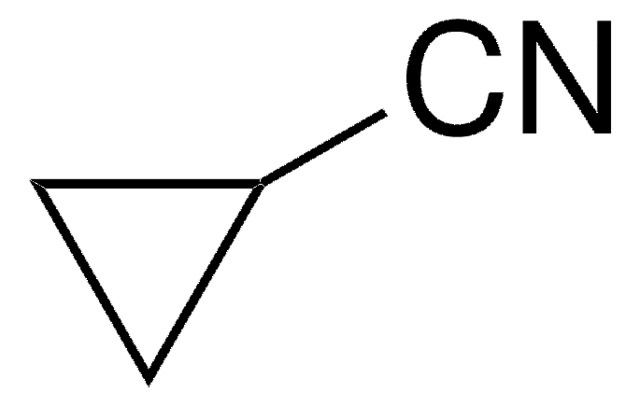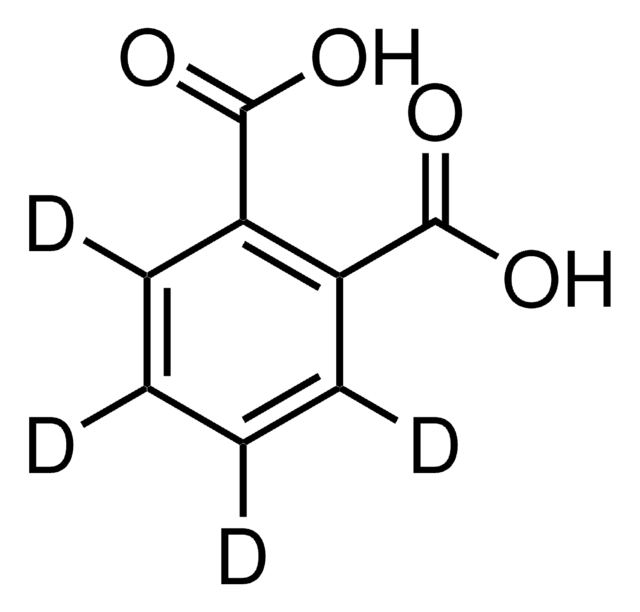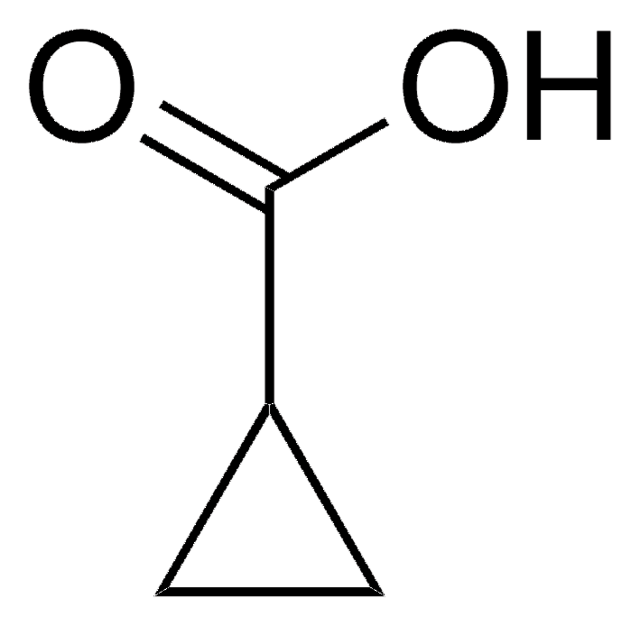366471
Cyclopentanecarbonitrile
98%
Synonym(s):
Cyanocyclopentane, Cyclopentyl cyanide
Sign Into View Organizational & Contract Pricing
All Photos(1)
About This Item
Linear Formula:
C5H9CN
CAS Number:
Molecular Weight:
95.14
Beilstein:
1098717
EC Number:
MDL number:
UNSPSC Code:
12352100
PubChem Substance ID:
NACRES:
NA.22
Recommended Products
Quality Level
Assay
98%
form
liquid
refractive index
n20/D 1.441 (lit.)
bp
67-68 °C/10 mmHg (lit.)
mp
−76 °C (lit.)
density
0.912 g/mL at 25 °C (lit.)
SMILES string
N#CC1CCCC1
InChI
1S/C6H9N/c7-5-6-3-1-2-4-6/h6H,1-4H2
InChI key
SVPZJHKVRMRREG-UHFFFAOYSA-N
Looking for similar products? Visit Product Comparison Guide
General description
Cyclopentanecarbonitrile is an alicyclic nitrile.
Application
Cyclopentanecarbonitrile is suitable for use as substrate to investigate the specific activity of nitrile- and amide- hydrolyzing enzymes isolated from Candida guilliermondii UFMG-Y65 cells. It is suitable for use as reagent to investigate the nitrile degradation by Candida guilliermondii CCT 7207 using free and immobilized cell systems.
Signal Word
Danger
Hazard Statements
Precautionary Statements
Hazard Classifications
Acute Tox. 3 Oral - Eye Irrit. 2 - Flam. Liq. 3 - Skin Irrit. 2 - STOT SE 3
Target Organs
Respiratory system
Storage Class Code
3 - Flammable liquids
WGK
WGK 3
Flash Point(F)
132.8 °F - closed cup
Flash Point(C)
56 °C - closed cup
Personal Protective Equipment
dust mask type N95 (US), Eyeshields, Gloves
Choose from one of the most recent versions:
Already Own This Product?
Find documentation for the products that you have recently purchased in the Document Library.
J C Dias et al.
Applied microbiology and biotechnology, 56(5-6), 757-761 (2001-10-17)
Nitrile degradation by Candida guilliermondii CCT 7207 using free and immobilized cell systems was compared. Different specific growth rates were observed for immobilized (mumax=0.021 h(-1)) and the free cells (mumax=0.029 h(-1)). The maximum specific rate of acetic acid formation was
J C Dias et al.
Canadian journal of microbiology, 46(6), 525-531 (2000-07-29)
Candida guilliermondii UFMG-Y65, isolated from a gold mine, was able to utilize different nitriles and the corresponding amides as sole source of nitrogen, at concentrations up to 2 M. Resting cells cultivated on YCB-acetonitrile medium showed nitrile hydrolyzing enzyme activities
Our team of scientists has experience in all areas of research including Life Science, Material Science, Chemical Synthesis, Chromatography, Analytical and many others.
Contact Technical Service










